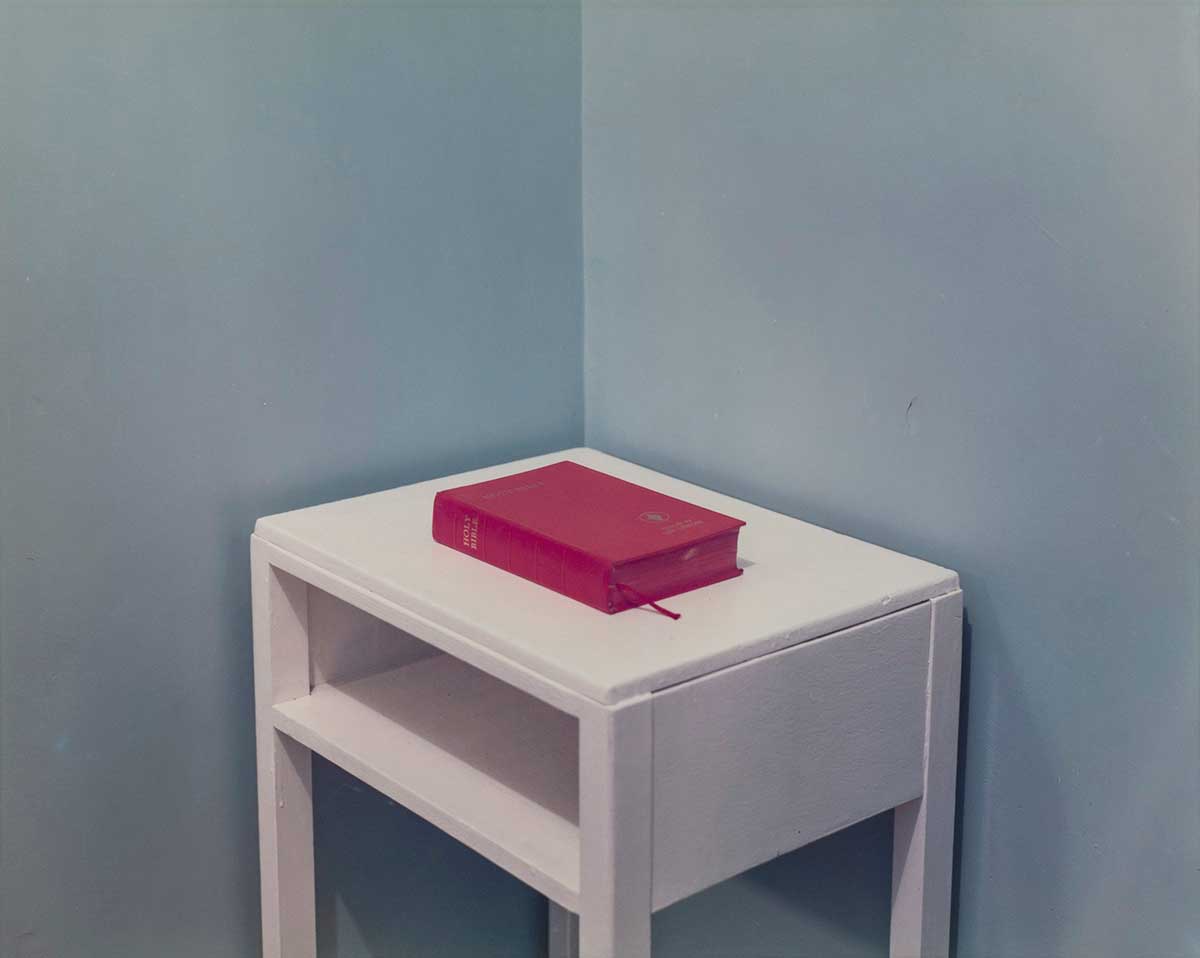Published in 1983, Paul Graham’s A1 – The Great North Road was Britain’s first ever colour monograph. Graham’s revolutionary use of a vibrant palette ultimately paved the way for a dynamic new era of British photography. His subject, the A1, was the first major road to run the entire length of England. Perceived as the protagonist of the 1930s road system, the A1 connected London, the industrial Midlands and the north east of England, through to Edinburgh. However, by the time Graham focussed his lens on the A1, the road and its infrastructure were in a state of disuse, eclipsed by the UK’s faster and more desirable motorways. So too, Britain itself was experiencing societal shifts under Thatcher’s government and the UK’s declining industrial base. Thus, A1 – The Great North Road acts as a tool within which to trace the social, political, and cultural atmosphere of 1980s Britain.
Graham’s monograph sees young executives striding through the bustling streets of central London, a lorry driver standing amongst his cargo in Yorkshire, and two glassy eyed cafe assistants, all saturated in cool, syrupy colours. So too, Graham’s photographs of people encapsulate a distinct sense of melancholy. Many of his subjects lock eyes with the lens, engaging the camera in an unmoving gaze of exhaustion. Needless to say, smiles are sparse throughout the monograph. It is, however, Graham’s photographs of unpopulated interiors that convey the most emotion. These images exude a mournful stillness, eerily empty bar the forgotten paraphernalia of time spent on the road, a bottle of ketchup or an ashtray, for example. Instead of observing an individual face-on, we are left to imagine the many people that once used a room and its furnishings. Thus, each interior aches with a multitude of stories rather than a single one.
Bible, Drivers’ Rest Room, Blyth Services, Blyth (March 1981) closes its focus on a scarlet bible atop a stout white table in the corner of a room. The table, situated against pastel blue wallpaper, appears luminescent, surrounding the holy book in an appropriate angelic glow. Here, Graham implements an ingenious use of colour, layering blue and red (opposites on the colour spectrum) between a thick band of white. The photograph mimics the composition of a Josef Albers painting, each clearly defined patch of colour engulfing the next in an illusory haze. Aside from Bible, Drivers’ Rest Room’s hypnotic palette, the image is in fact emotive at its heart. Lacking a grounding figure within the room, Bible, Drivers’ Rest Room focuses our sole attention to the bible in the centre of the composition. We are invited to imagine who has used the book in its years of sitting in a rest room, and under what circumstances. Surely there have been many. A quick passage for a safe drive, a longer prayer with the hope of resolving some trouble back home, or perhaps a flick through from a curious but irreligious reader. Bible, Drivers’ Rest Room holds these stories within its frame, engulfing them beneath its smooth colouration
(By Eleanor Lerman)
